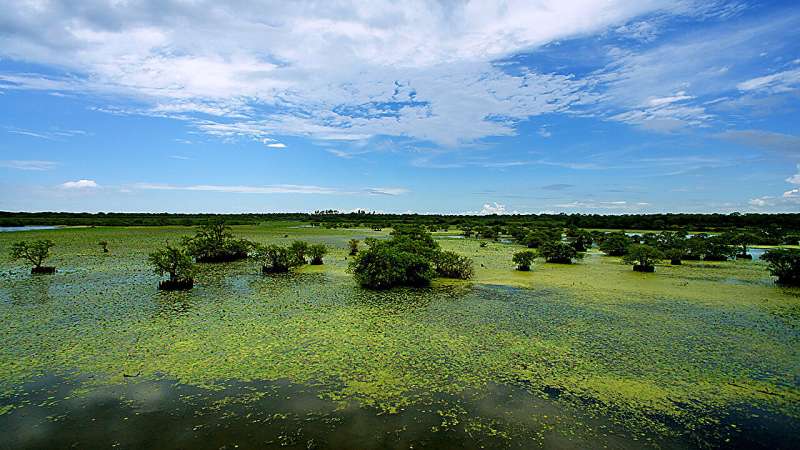This article has been reviewed according to Science X's editorial process and policies. Editors have highlighted the following attributes while ensuring the content's credibility:
fact-checked
peer-reviewed publication
proofread
Providing better bottom-up estimates of wetland methane emissions

Methane is one of the most important greenhouse gases globally, second only to carbon dioxide in terms of its warming effects in the atmosphere. A large portion of natural methane emissions comes from wetlands, although exactly how much is unclear. Figuring out the magnitudes and locations of wetlands' methane contribution more precisely is crucial for improving our understanding of climate change.
One difficulty is that some models of wetland methane emission disagree with each other, making it difficult to assess trends. New analyses using more data could help shed light on methane emissions worldwide and help reduce uncertainty in climate models.
Gavin McNicol and colleagues used 119 site-years of data from 43 wetland sites tracked in the FLUXNET-CH4 global eddy covariance methane flux database, which was compiled by the Global Carbon Project (GCP) in close partnership with AmeriFlux and the European Eddy Fluxes Database Cluster. The authors used the data to train a random forest model ensemble to estimate total methane emissions from wetlands worldwide.
Their results agreed generally with those from existing models of methane emissions but diverged from results for the tropics, indicating a need for better data and modeling of tropical wetland methane sources. The study is published in the journal AGU Advances.
As in previous studies, the new results indicated that about 68% of wetland methane emissions come from tropical wetlands. But they differed on where within tropical wetlands the emissions originate. For example, the new model indicated that the semiarid monsoon Sahel was responsible for three times as much methane as previous models using GCP data have indicated. Meanwhile, the model found far lower emissions totals from humid tropical forested wetlands such as those in the Amazon, Congo, and Indonesian archipelago.
One reason for the disparities could be that current methane monitoring systems lack robust coverage in tropical regions and are overrepresented in certain ecosystems, the authors say. Those factors could bias existing data on tropical methane emissions.
The researchers suggest that methane contributions from humid and seasonally wet tropical wetlands could currently be underestimated or overestimated across different methane emissions models. Reconciling outputs from these models could help firm up projections of future methane release as well as estimations of future warming.
More information: Gavin McNicol et al, Upscaling Wetland Methane Emissions From the FLUXNET‐CH4 Eddy Covariance Network (UpCH4 v1.0): Model Development, Network Assessment, and Budget Comparison, AGU Advances (2023). DOI: 10.1029/2023AV000956
Journal information: AGU Advances
Provided by Eos
This story is republished courtesy of Eos, hosted by the American Geophysical Union. Read the original story here.





















